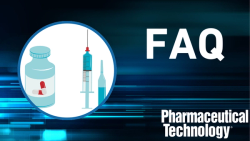
OR WAIT null SECS
- About Us
- Advertise
- Contact Us
- Editorial Info
- Editorial Advisory Board
- Do Not Sell My Personal Information
- Privacy Policy
- Terms and Conditions
© 2025 MJH Life Sciences™ , Pharmaceutical Technology - Pharma News and Development Insights. All rights reserved.
What’s In a Name? For Biosimilars, A Lot
Will biosimilars share a compendial identity like generic drugs do?
There is still some uncertainty surrounding whether a biosimilar will share the same compendial identity-or biological product monograph-as its reference product. Pharmaceutical Technology spoke to United States Pharmacopeia to find out a bit more about how the naming process for a drug occurs.
Naming for small-molecule drugsPharmTech: What is current practice for small-molecule generic drugs in terms of a product’s name and its monograph?
USP: USP’s mission is to improve global health through public standards and related programs that help ensure the quality, safety, and benefit of medicines and foods. Our flagship compendia of public standards-United States Pharmacopeia–National Formulary (USP–NF)-play a key role in the adulteration and misbranding provisions of US federal food and drug law.
International Nonproprietary Names (INNs) are given to most drugs early in the drug-development process, even though many of these drugs never make it onto the market. The INN is established by the World Health Organization’s expert group on nonproprietary names. In the United States, the United States Adopted Names Council (USAN) next names medicinal articles, usually also well before approval. When FDA approves a product, it assigns an interim established name, and generally (but not always) follows the USAN name. While USP provides expert representation in both INN and USAN deliberations, USP’s role in naming comes into play after approval of a drug, when a USP monograph is developed and is given an official title, which then becomes the established name for that drug.
Small-molecule generic drugs fall under the same USP monograph and must use the same name as the innovator product (assuming a monograph exists for that product) because they share the same compendial identity. Whenever two products share the same compendial identity (meet the same identification tests and other aspects of identity in the monograph), they are covered by the same monograph--understanding that the monograph tests and acceptance criteria describe a subset of the quality attributes of the articles in question and do not make a statement about their regulatory status, clinical attributes, or interchangeability, all of which are for FDA to determine. Once a product is determined to share the same identity as a drug recognized in the compendium (a drug for which there is an existing monograph), it is required to use the same monograph title (the official title) as its non-proprietary name, unless FDA chooses to establish a different name via regulation. Conversely, if a drug does not share the same identity as a drug recognized in the compendia, it must use a ‘clearly distinguishing and differentiating name.’ For details, see 21 Code of Federal Regulations 299.5.
Name designationPharmTech: Who has the final say when it comes to naming? USP or FDA?
USP: FDA has the final say, but only if it chooses to establish a name via notice and comment rulemaking. Under section 502(e) of the Food Drug and Cosmetic Act (FDCA), a drug is misbranded if its label does not include the ‘established name’ of the drug and of each ingredient. Section 502(e) specifies that the ‘established name’ of a drug or ingredient is:
(A) The official name designated by FDA in accordance with section 508 of the FDCA;
(B) The official title used for the drug or ingredient in an official compendium such as USP or NF, if FDA has not designated a name under (A); or
(C) If no name has been established under (A) or (B), the common or usual name of the drug or ingredient.
Under this provision, unless FDA has designated an ‘official name’ under section 508, the ‘official title’ used in the USP-NF becomes the established name. In order to designate an official name under section 508, FDA must go through a multi-step process including rulemaking, and it has never done so. Recent case law confirmed that while FDA might assign a name upon drug approval, this name is considered an ‘interim’ established name until an established name is provided in the USP–NF (Novartis v. Leavitt, 435 F.3d 344) (1).
PharmTech: Will naming conventions for biosimilars merely be suggestions, or will they be enforceable by law?
USP: The statutory and regulation provisions described previously relating to naming apply the same way to biosimilars as they do to other drugs, and USP’s role in establishing standards and names for products similarly is the same with respect to biosimilars as it is for other drugs. USP has no role in enforcement, which falls under the purview of FDA and other regulatory bodies.
PharmTech: How will the naming of a biosimilar interplay with an innovator product’s monograph?
USP: As stated previously, if two products share the same compendial identity, they must use the same monograph title as their nonproprietary name. This is true for all drugs regardless of their regulatory status; as noted previously, compendial identity speaks to common quality attributes and does not make any statement about regulatory status.
Reference
1. Novartis v. Leavitt, 435 F.3d 344 (2006), accessed April 13, 2015.
Article DetailsPharmaceutical Technology
Vol. 39, No. 6
Page 22
Citation: When referring to this article, please cite it as R. Hernandez, "What’s In a Name? For Biosimilars, A Lot," Pharmaceutical Technology39 (6) 2015.



